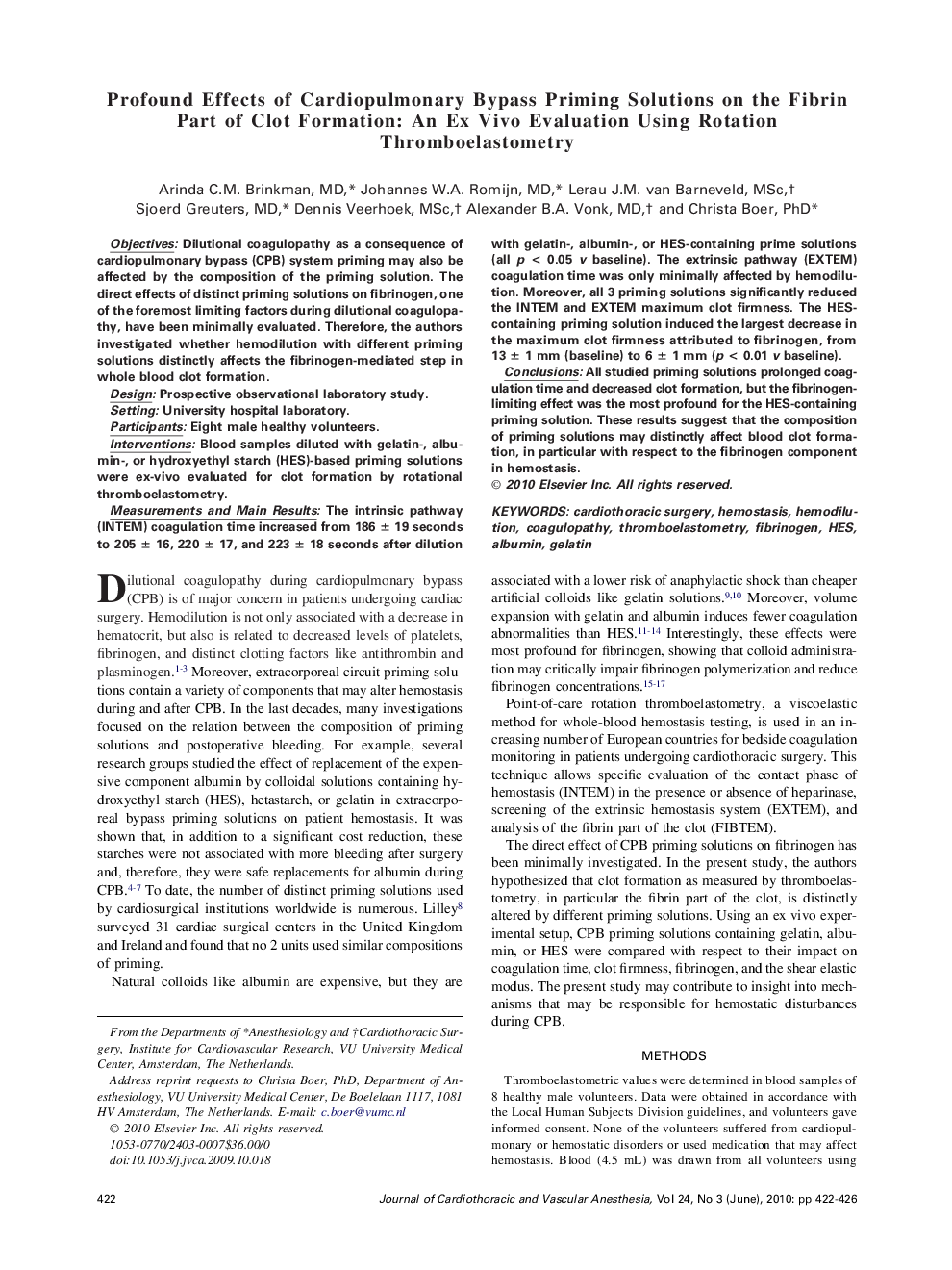| کد مقاله | کد نشریه | سال انتشار | مقاله انگلیسی | نسخه تمام متن |
|---|---|---|---|---|
| 2760440 | 1150173 | 2010 | 5 صفحه PDF | دانلود رایگان |

ObjectivesDilutional coagulopathy as a consequence of cardiopulmonary bypass (CPB) system priming may also be affected by the composition of the priming solution. The direct effects of distinct priming solutions on fibrinogen, one of the foremost limiting factors during dilutional coagulopathy, have been minimally evaluated. Therefore, the authors investigated whether hemodilution with different priming solutions distinctly affects the fibrinogen-mediated step in whole blood clot formation.DesignProspective observational laboratory study.SettingUniversity hospital laboratory.ParticipantsEight male healthy volunteers.InterventionsBlood samples diluted with gelatin-, albumin-, or hydroxyethyl starch (HES)-based priming solutions were ex-vivo evaluated for clot formation by rotational thromboelastometry.Measurements and Main ResultsThe intrinsic pathway (INTEM) coagulation time increased from 186 ± 19 seconds to 205 ± 16, 220 ± 17, and 223 ± 18 seconds after dilution with gelatin-, albumin-, or HES-containing prime solutions (all p < 0.05 v baseline). The extrinsic pathway (EXTEM) coagulation time was only minimally affected by hemodilution. Moreover, all 3 priming solutions significantly reduced the INTEM and EXTEM maximum clot firmness. The HES-containing priming solution induced the largest decrease in the maximum clot firmness attributed to fibrinogen, from 13 ± 1 mm (baseline) to 6 ± 1 mm (p < 0.01 v baseline).ConclusionsAll studied priming solutions prolonged coagulation time and decreased clot formation, but the fibrinogen-limiting effect was the most profound for the HES-containing priming solution. These results suggest that the composition of priming solutions may distinctly affect blood clot formation, in particular with respect to the fibrinogen component in hemostasis.
Journal: Journal of Cardiothoracic and Vascular Anesthesia - Volume 24, Issue 3, June 2010, Pages 422–426